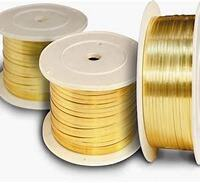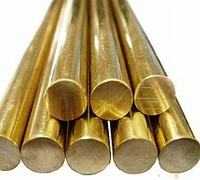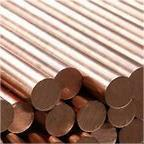1. Introduction
Copper continues to be a cornerstone material across industries—from electrical infrastructure to HVAC systems and renewable energy projects. In the past 48 hours, global copper prices have surged due to supply constraints in Chile and rising demand from electric vehicle manufacturers, pushing the LME copper price above $9,800 per metric ton. This volatility directly impacts everything from copper rod price to copper strip price and even aircon copper pipe pricing.

Whether you’re an electrician, plumber, scrap recycler, or DIY enthusiast, understanding the different forms and applications of copper—especially the versatile copper rod—is essential. Let’s break down what you need to know.
2. What Is a Copper Rod?
A copper rod is a solid, cylindrical bar made of high-conductivity copper, typically used in electrical grounding, welding, and as a raw material for manufacturing wires, tubes, and other components. Also referred to as rod copper or copper round bar, these rods come in various diameters and purities, with electrolytic-tough-pitch (ETP) copper being the most common.
3. Types of Copper Rods and Their Uses
Not all copper rods are created equal. Depending on the application, you might need a specialized type:
- Copper earth rod: Used for grounding electrical systems to prevent surges and ensure safety.
- Earthing rod copper or ground rod copper: Often made from solid copper or copper-bonded materials for durability in soil.
- Copper brazing rod and copper to copper brazing rods: Designed for joining copper parts without melting the base metal.
- Copper welding rod, copper rod for welding, and copper to copper welding rod: Used in specialized welding applications where high thermal conductivity is required.

4. Copper Bonded and Clad Rods: Cost-Effective Alternatives
Pure copper rods can be expensive, so many opt for copper bonded or copper clad variants. A copper bonded earthing rod features a steel core with a thick copper layer, offering strength and corrosion resistance at a lower cost. Similarly, copper clad ground rods (also called copper clad steel ground rods or copper clad earth rods) provide excellent conductivity while reducing material costs.
These are especially popular in large-scale infrastructure projects where budget and longevity matter. The term copper bonded steel refers to this hybrid construction, balancing performance and affordability.
5. Copper Strips: The Flat Cousin of the Rod
While rods are round, copper strips are flat and flexible—ideal for busbars, earthing systems, and electronics. You’ll often hear terms like flat copper strip, thin copper strips, or 1mm copper strip when sourcing materials.
Specialized variants include beryllium copper strip (for springs and connectors), nickel plated copper strip (for corrosion resistance), and copper earth strip 25x3mm (a standard size for grounding). Whether you need a roll of copper strip, copper edging strip, or copper metal strips, availability is widespread—but always check copper strip price before bulk ordering.

6. Stripping Copper Wire: Tips for Recyclers and DIYers
If you’re into recycling, knowing the best way to strip copper wire is crucial. Burning copper wire for scrap is dangerous and illegal in many areas—it releases toxic fumes and degrades copper quality.
Instead, use mechanical strippers or automated machines. The best way to strip copper cable involves cutting, feeding, and cleanly removing insulation without nicking the conductor. For scrap dealers, stripping wire for recycling properly can significantly increase resale value. And if you’re wondering, ‘Is stripping copper wire worth it?’—yes, especially with current copper prices.
7. Copper Pipes and Tubing: HVAC and Plumbing Essentials
Beyond rods and strips, copper pipework remains vital in plumbing and HVAC. Air conditioning copper pipe (also called aircon copper tube or AC copper pipe) is used in refrigerant lines due to its thermal efficiency and durability.
Common sizes include 15mm copper pipe, 22mm copper tube, and 3/4 copper tubing. Proper bending copper pipe and copper pipe soldering techniques ensure leak-free joints. Prices for copper pipe and fittings fluctuate with the market—so keep an eye on ac copper pipe price trends if you’re planning an installation.
8. Copper Bars and Ingots: Industrial Building Blocks
Copper bars—including copper flat bar, flexible copper bus bar, and cu bars—are used in power distribution and industrial machinery. Copper ingots serve as raw material for casting rods, strips, and pipes. With 1oz copper price climbing, many are asking: ‘Is it worth melting copper into bars?’ For large-scale recyclers, yes—but small operations may find it inefficient.
9. Where to Buy and Pricing Considerations
Whether you search for ‘copper strip near me,’ ‘copper bars for sale,’ or ‘earthing rod price,’ always compare suppliers. Copper rod price varies by purity, diameter, and form (solid vs. bonded). Similarly, copper strip price depends on thickness, alloy, and quantity. Buying in bulk often reduces per-unit costs, especially for contractors and electricians.
10. Conclusion
From copper rod welding to copper roof strip applications, this versatile metal remains indispensable. With rising global demand and tightening supply, understanding the nuances of copper products—from rod copper to copper clad steel earth rod—can save time, money, and ensure project success. Stay informed, source wisely, and always prioritize safety and sustainability—especially when stripping copper wire for scrap or installing earthing systems.
Our Website founded on October 17, 2012, is a high-tech enterprise committed to the research and development, production, processing, sales and technical services of ceramic relative materials such as 10. Our products includes but not limited to Boron Carbide Ceramic Products, Boron Nitride Ceramic Products, Silicon Carbide Ceramic Products, Silicon Nitride Ceramic Products, Zirconium Dioxide Ceramic Products, etc. If you are interested, please feel free to contact us.

